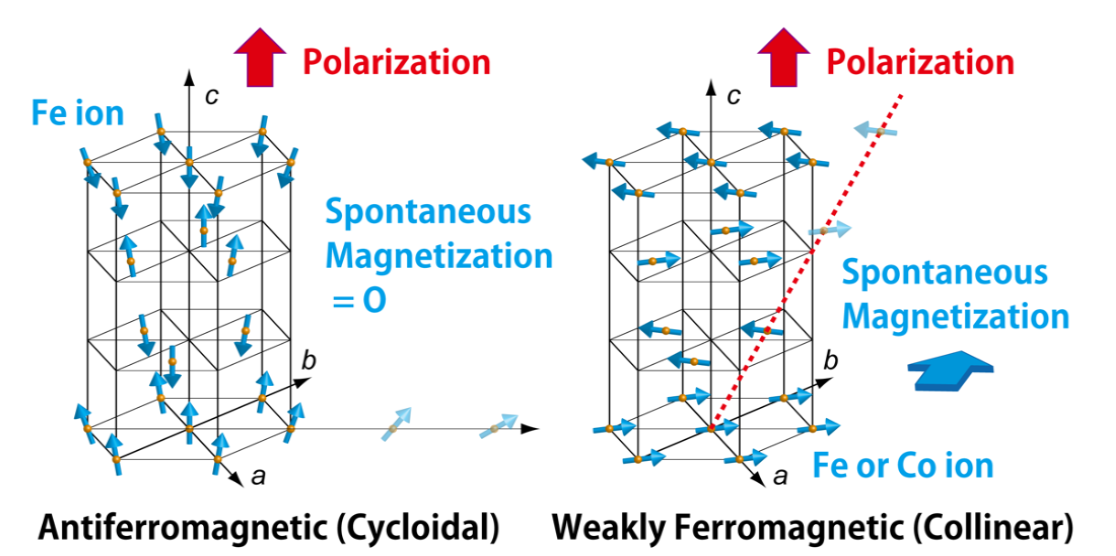
Portions of the BiFeO3 lattice of cycloidal and collinear phases with only Fe ions are shown at left and right, respectively. The arrows indicate the Fe3+ moment direction. The ground state of BiFeO3 had a cycloidal spin structure, which is destabilized by substitution of Co for Fe and at higher temperatures. The spin magnetic moments compensate with each other in the left panel, but canting between neighboring spins leads to the appearance of weak ferromagnetism in the left panel.